Okay so – let me start by saying, no two brand narratives I’ve created or read have ever been exactly the same. (I swear…)
But it’s weird how many of them seem to stem from what feels like a handful of common argument structures, once they get broken down into their fundamental logic.
I’ve been playing this game for a while now and so far I’ve identified eight very different story arcs that seem to underlie most B2B narratives – whether that’s high-level brand narratives or more granular pieces of content, like eBooks, blog posts, infographics and so on.
I thought it’d be helpful to detail them here today, along with a few tips on how to get them right – based on the times I’ve seen them go very wrong.
For example, if you’re struggling with your own story, it might be because you’re trying to do two of them at the same time, or because you’re missing a killer step in one or the other.
Once you’ve gone through them all I’d love to know which ones are your favourites and why, and most importantly – if you think I’ve missed any. I’m sure the eight I’ve identified aren’t the only eight B2B arcs out there.
- The one where you’re the best of both worlds.
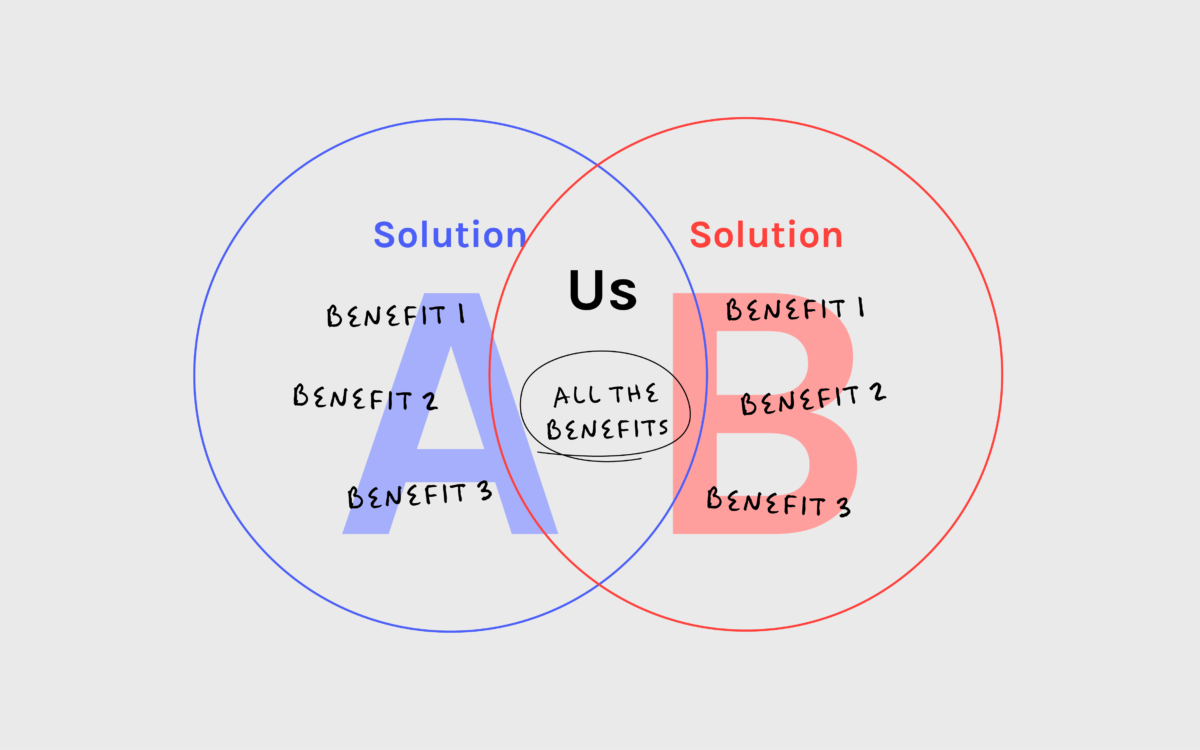
Let’s start with the most classic B2B narrative – the one where you give customers the benefits of two (or more) solutions combined, so they no longer have to make compromises on what they get out of their investments.
The logic goes:
- Brands used to have to choose between A and B
- A would get you [x] benefits
- While B would get you [y] benefits
- But what if you could have the benefits of A and B?
- Well, thanks to [z]*, you finally can
- Meet C – the only way to get [x] and [y], all thanks to [z]
*In this case [z] is the reason that the trade-off has been broken – for example, it could be an innovation that’s enabled self-service, or rapid scaling, or something else that was never possible before.
The pitfalls:
This is a very low-risk story arc from a tangibility standpoint. But one thing to avoid is ‘listifying’ this type of story. I’ve seen a lot of brands try to cram all the benefits into their writing at every opportunity, which leads to lines like, “We help businesses around the world to work more efficiently, spend less money, make their employees happier, and have less of an environmental impact – for low cost.” That’s way too many concepts for an audience coming in cold to digest – and it makes the story sound too good to be true, like there must be some sort of catch.
Another pitfall to avoid is criticizing the competition too much – the logic of this story has all the ‘convincing’ power you need, so adding in a point like, “Oh and btw, solution A sucks” will just make the story sound bitter – or even worse, threatened by competition that’s supposed to be inferior.
An example:
Tableau: The #1 BI Software
“We make analysing data fast and easy, beautiful and useful.”
Why it works:
Brands used to have to choose between more sophisticated but ugly analytics tools, and more primitive tools that looked good. With Tableau, they can get both. Simple as that. No wonder they’ve got majority market share.
- The one where you’ve spawned a new era.
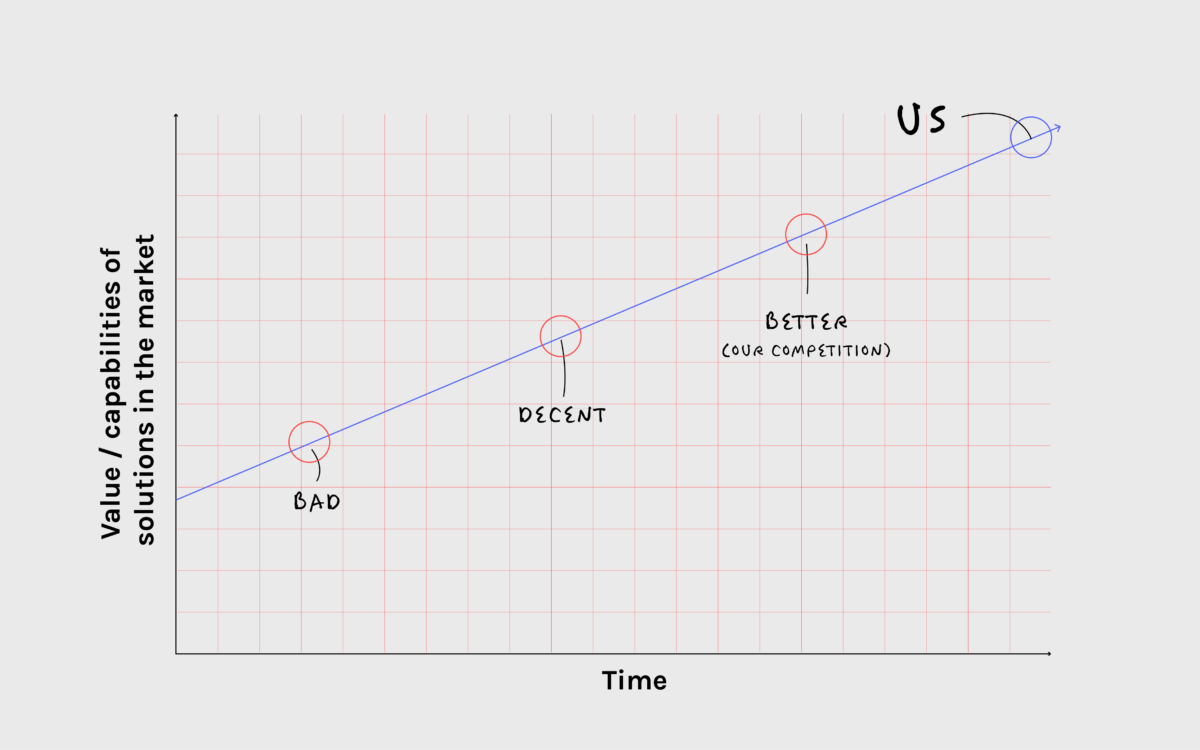
This is a perfect arc for brands that center around AI or big data – where the development of available solutions (and their associated benefits) tends to accelerate over time like compound interest. It’s also a clean, tangible way of standing out from the competition – without having to throw massive shade.
Narrative structures like these also make for great overarching campaign themes, where you can center multiple stories around a new, fresh, exciting time that everyone and their mum should want to be a part of. The logic goes:
- Once upon a time there was solution A
- But then the world changed, and A wasn’t good enough
- Then came solution B
- But then the world changed, and B wasn’t good enough
- Then came solution C
- Solution C has kept you afloat until now, however:
- The world is about to change in such a way that C soon won’t be good enough
- Meet D: the key to survival (or prosperity) in the new world
The pitfalls:
Of course, any brand that tells this kind of story does actually need to be a leap ahead of its competitors to make the logic effective. And it needs to be fundamentally changing the rules of the ‘world’ that it’s ushering into the new era. For example: Salesforce actually changed the buying paradigm with cloud, they didn’t just offer ‘Siebel but better’.
There’s also the risk of sounding a bit…cringe. For example, we all know at least one business that centers its narrative around “[industry name] 4.0” or “[X-driven] digital transformation”. When you break those concepts down, they don’t actually say much – “4.0” really just means “the next one”. And “digital transformation” isn’t a very unique spin to promote in 2020 – it’s been done to death.
Instead, the most effective versions of these story arcs coin something unique, and something practical – say, a specific approach to problem solving, or a new product category that’s just been created. That’s what’ll get a brand associated with a new era.
An example:
Zuora: unifying order-to-cash for a dynamic subscription world.
“The subscription economy is here. The way we do business has fundamentally changed.”
Why it works:
To pull this story off, Zuora used data to prove the point that customers were demanding new consumption models, rejecting traditional ownership, and spending more on subscriptions than ever before – the perfect backdrop for introducing the dawn of the ‘subscription economy’. Notice how subtly smart the arc is though: they took something inevitable (which they proved with data), but by coining it, made people believe it was something they spawned (when they actually just helped brands deal with it).
*Shoutout to Andy Raskin who’s written a great post on why Zuora’s story works so well
- The one where you break down silos for the first time.
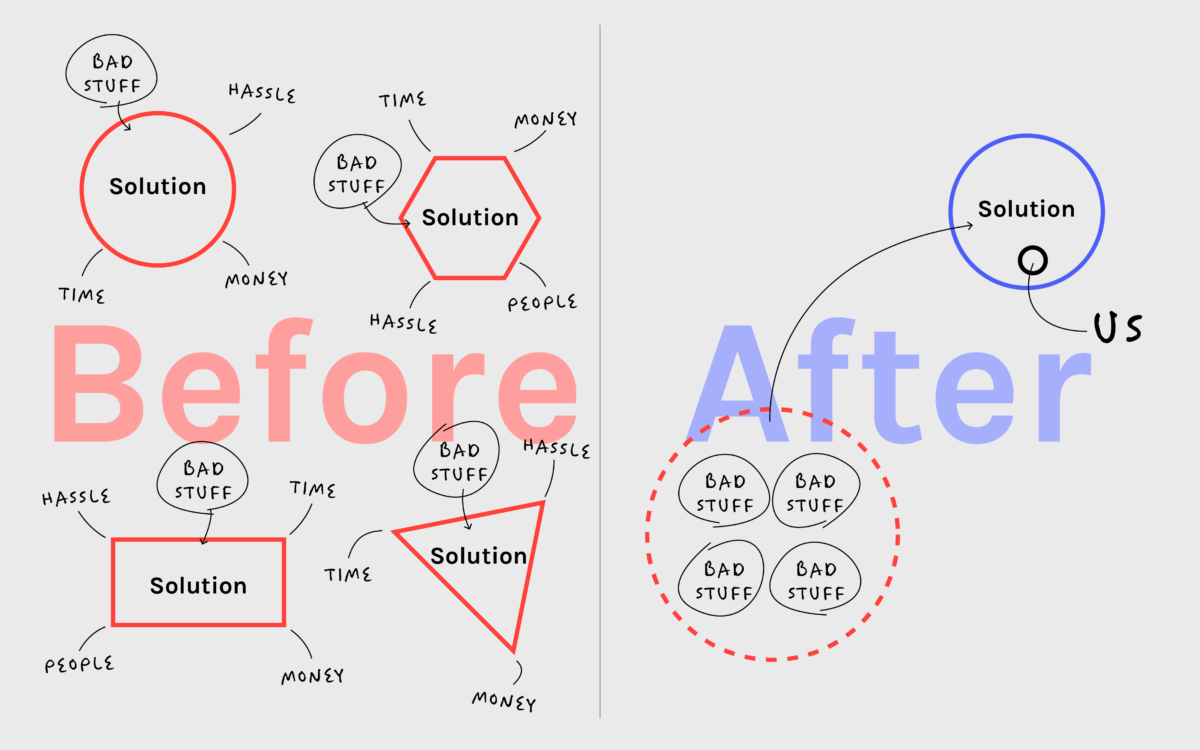
This one’s a little more complicated than the last two, but it’s still an effective story arc. In a nutshell: you’ve got a whole bunch of prospects out there fighting fires in silos – with each department using a different solution, and none of them communicating.
Over time, they’ll have wound up duplicating their efforts, wasting their money, getting piecemeal insights that don’t speak the same data language…you get the picture. It’s one big, clunky, wasteful mess.
So far, no one’s been able to bring these siloed efforts together. Then here you come along with a shiny new way of doing things that tackles everything in one go (with the added simplicity that they’ve now got fewer vendors to deal with).
The logic goes:
- A fire started, so people used solution A to put it out
- Another fire started, so people used solution B to put it out
- Another fire started, so people used solution C to put it out
- This cycle repeated multiple times
- Now your business is juggling a whole bunch of siloed solutions and efforts, which are costing money, time, and missed opportunities (like holistic insights)
- Your siloes are now the fire
- Meet D – the solution that gets your other solutions (or parts of the business) talking and collaborating, so you can solve problems faster, share learnings, avoid duplicated efforts, predict problems sooner, get more holistic insights, etc
The pitfalls:
The biggest one is that it’s very easy to sound condescending when you’re telling people they’re doing something wrong. I’ve seen this play out badly a couple of times where brands have led with, “STOP DOING THINGS IN SILOS, IDIOTS!” type messages. The truth is, people know they shouldn’t be tackling problems in silos, what they want to hear is how to break them down without wreaking havoc.
The second pitfall to be conscious of is that breaking down silos is only half a story – it’s also critical to play to the upshots. For example, does smashing silos mean customers can do things faster? Does it mean they can save money? Does it mean they can get more holistic insights across the business? Does it mean they can scale more easily? Whatever the upshots, those should be front and center of this type of story, rather than something tacked on at the end.
An example:
Salesforce: the world’s #1 CRM platform
“Extend and enhance the world’s #1 CRM platform with these unified services.”
Why it works:
Salesforce’s narrative is the epitome of this kind of arc, and it’s a strong one at that – because they really can unite marketing, sales, commerce, service, and IT teams with one CRM platform….that’s a hell of a lot of siloes smashed. Plus, work itself is increasingly crossing silos, so any technology that does the job of ‘synthesizing’ others (like Salesforce) is fuel for a great, timely story.
- The one where you’re super niche.
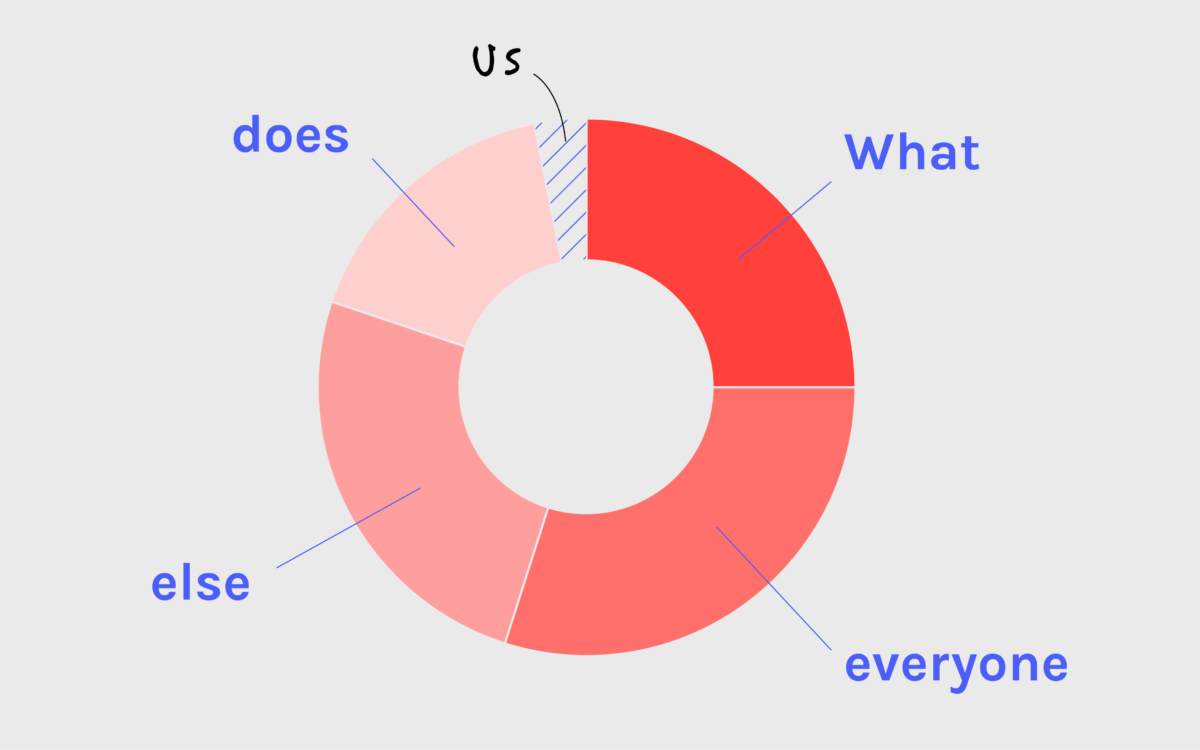
Some brands think having a limited solution focus or restricted amount of domain expertise is a weakness.
But frame it in the right way and you can actually convey a significant, unique advantage.
Say you’ve been around for 15 years and so has your biggest competitor. While you’ve remained focused on solving problems in one industry, your competitor has broken into all the verticals. That competitor is now the market leader. What’s your next move? Criticizing the competition? Tailoring your marketing for verticals you know nothing about in an attempt to catch up?
How about playing to your strength: you’ve been focused on one thing for 15 years – that makes you a specialist. And that’s a seed for a great story.
The logic goes:
- Some businesses try to solve problem [x] for everyone
- But problem [x] isn’t the same for everyone
- So what those businesses are actually trying to solve are problems [v], [w], [x], [y] and [z] – with the same approach
- We, on the other hand, only solve, and have only ever solved problem [x]
- Because of that, we’ve learned more about problem [x] than anyone else
- Because of that, we’ve refined, developed and perfected our solutions for problem [x]
- Because of that, we’re best positioned to solve problem [x] for you
The pitfalls
It’s important to get the balance right with this one – some brands talk way too much about how their biggest competitor caters to ‘everyone’. Some even make reference to their competitors’ hefty market share (yes, really). That puts them at massive risk of accidentally promoting the competition.
Instead, if you’re gonna use this arc, focus almost entirely on your niche: you understand your prospects, you know their world inside out, you’ve encountered the same challenges they’re facing today, you know exactly what it takes to solve them better than anyone else.
Keep reassuring your audience of those things (in-jokes and audience-specific jargon are great tactics for this) and you won’t go wrong.
An example:
Monterro: turning Nordic software companies into global players.
“Monterro invests in and develops Nordic software companies. That’s it. We’re proud of our niche focus: what we don’t do is just as important as what we do.”
Why it works:
Monterro’s niche narrative is a great one as it includes a regional niche, an industry niche and a customer-growth-stage niche. Anyone who fits their target demographic would be hard pressed to not see them as a best fit.
- The one where you make people realize they want the wrong things.
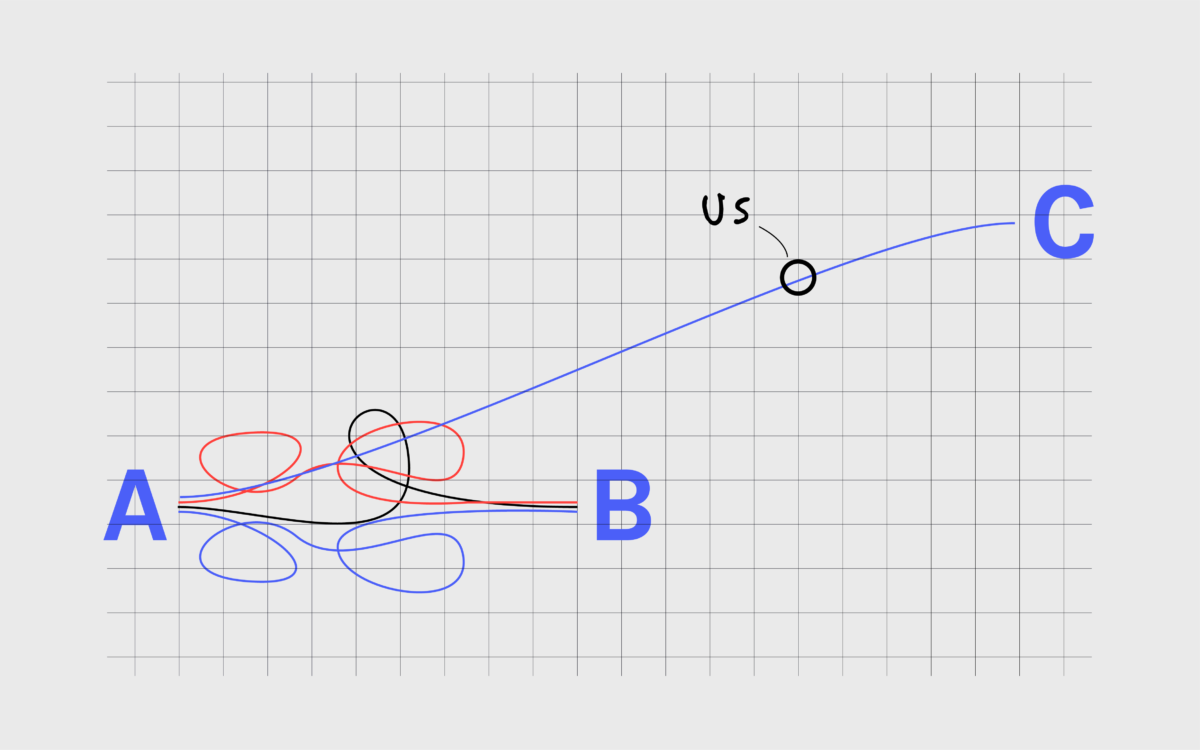
Henry Ford said it best: “If I had asked people what they wanted, they would have said faster horses.”
That’s the epitome of this kind of story. The idea is that everybody thinks they need to get to a certain endpoint – but you (unlike your competitors) see more potential. You see a journey that doesn’t just end in your customer catching up with the rest of their market, but going somewhere totally different.
The logic goes:
- Many of your competitors have progressed from A to B
- Naturally, you think you now need to get to B
- But what happens when you get to B?
- You end up in the same league as everyone else
- What if you could get somewhere better than B?
- Meet C – the new potential
- And now meet [x] – the solution that gets you to C
Another version goes:
- Many of your competitors have progressed from A to B
- Naturally, you think you now need to get to B
- But everyone’s been so busy worrying about B that they’ve lost sight of the fact that what really matters is C. B was just assumed to be the best way to get to C
- Meet [x] – the solution that gets you straight to C
The pitfalls:
The obvious one is that it’s hard to tell people to want something different from what they actually came for.
It’s why stories that use this arc should always do three critical things: first – explain why what people want isn’t good enough. Second, explain why people still think option B is best (for example, it’s the ‘easy’ way, or it leads to quick wins). Third, that it tells people why C is a ‘must’ rather than a nice-to-have.
And of course, it’s critical that ‘C’ is actually a different thing from ‘B’ – the story won’t work if ‘C’ is just ‘B but slightly better’.
An example:
Entrepreneur First: Find a co-founder
“Right now, the world’s most ambitious people are encouraged to join prestigious corporates, or top academic institutions and make slow and steady progress. This puts an artificial limit on what they can achieve, and how fast. We exist to remove that limit.”
Why it works:
Right from the get-go EF are introducing their audience to a destination they even didn’t know existed – a place where people can bypass the traditional methods of forming a business and get access to the best candidates, and get support in launching that business. They knew people wouldn’t automatically come looking for those benefits, so by telling the story in this way, they’ve both pulled prospects in with what they thought they wanted, and introduced prospects to a ‘better way’ with a convincing argument.
- The one where you stop people boiling the frog.
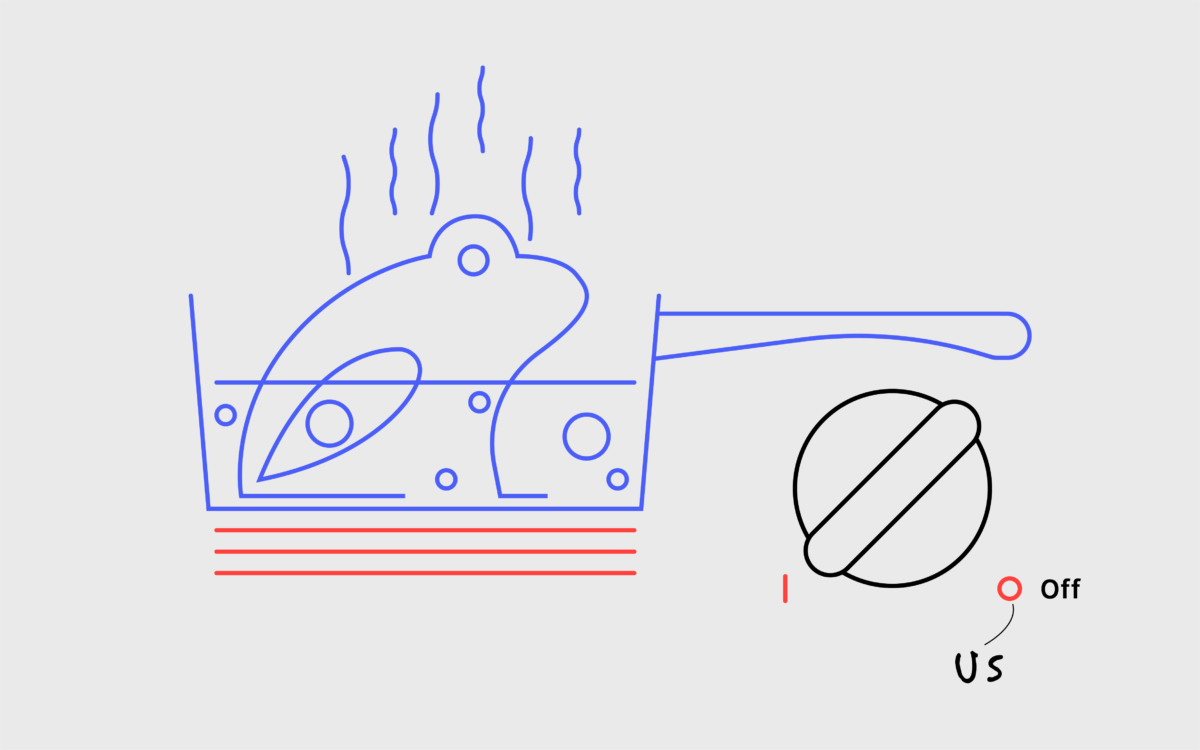
This is a great arc for brands whose offerings center around security (say, network security or inventory management) but it’s effective in other areas too.
The idea is: your prospects have been stewing on a problem for so long that they haven’t noticed it heating up. Sooner or later, that problem’s going to boil up into a crisis – one that could cost a business time, a hefty chunk of its budget, or worse, its reputation.
The logic goes:
- Once upon a time, a small problem cropped up – but you could work around it
- Then the problem got bigger – and you could work around it
- Now the problem’s huge – and you can work around it
- But here’s what you don’t know: the second this problem gets any bigger, it’ll be a disaster, for reasons [x], [y], [z]. You won’t have the resources or time to work around it
- Meet solution A: the solution that stops this problem escalating any further (or better: eliminates it completely)
*Fun fact: this is actually about the old-school problem of induction. Someone witnesses the same thing happening over and over again, so they expect the same results in the future. In this case that person is the customer: seeing a problem being dealt with over and over again, so assuming it can always be dealt with. This is the thought pattern you need to break.
The pitfalls:
Convincing a prospect that they need to be concerned about a crisis that hasn’t happened yet is hard. It’s why it’s critical to paint a very clear (and believable) picture of the costs of doing nothing – one that will resonate with the actual buyers of the solution, who might have a million other things on their radar (and be quite comfortable doing nothing).
One great trick brands use to make this kind of story as powerful as possible is to coin the problem, as one united concept, rather than constantly referring to a long list of interconnected issues. This gets people associating the ‘meta’ problem directly with the brand, and if it gets adopted widely enough, it means other brands have to start using it, with the initial brand becoming the ‘pioneer’ of that category of problem solving. (Geoffrey A. Moore’s ‘Crossing the Chasm’ is a great example of this.)
One last tip based on the best ‘frog boiling’ stories I’ve seen in this space – when you tell this story, don’t let it conclude with doom and gloom. Always play to the upshots – whether that’s something saved or something gained (or both). You’ll still get all the same logic into the narrative, but you’ll set up a story of hope instead of futility. And, more importantly, for prospects who are skeptical of how big a problem they actually have, playing to the upshots will give them something else to want to put money behind.
An example:
Continuity Software: Proactive prevention
“Chaos or control? Take charge and manage the resilience of your mushrooming cloud environments.”
Why it works:
The story starts with a comparison between what IT environments looked like 10 years ago versus what they’ll look like by 2023 (spoiler alert: very different). The story then makes it clear that if businesses aren’t ready for the world described in 2023 (i.e. if they don’t take a ‘proactive’ approach today), things will very quickly descend into a costly, risky fight against compounding chaos. One of the keys to this story being effective is the granular detail it goes into when describing exactly why 2023 will be so bad – it’s not just a few fluffy claims, but a super believable, well-researched, fleshed-out breakdown of all the complexities that’ll be integral to (or brought about by) tomorrow’s infrastructure.
- The one where you give your customers’ customers what they really want.
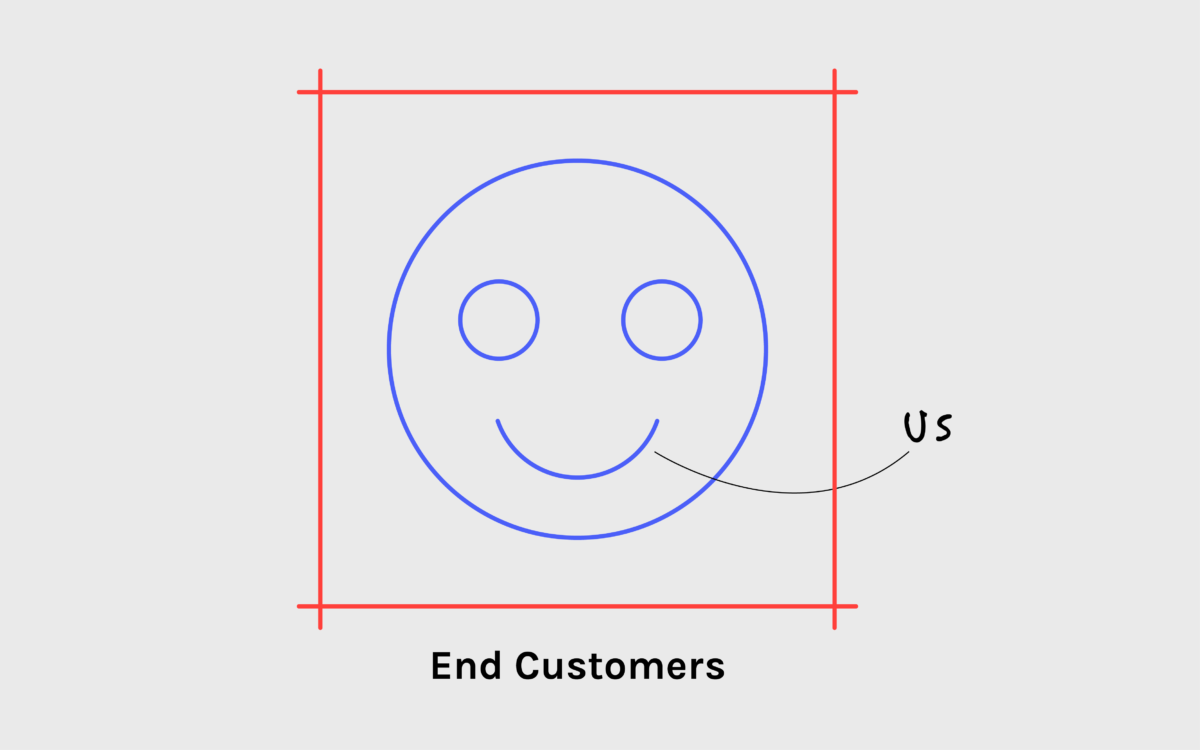
In a B2B space it’s easy to default to a technical argument rather than one that revolves around the end customer going from ‘sad’ to ‘happy,’ or ‘unproductive’ to ‘innovative’, etc. But that’s actually the biggest reason why stories centered around people are so effective in a tech context. They stand out because they go against the grain, and they compel because they go straight to the heartstrings. They give people something to relate to.
The logic goes:
- Solutions A, B and C are all capable of solving problem [x], and they all have great features
- But – they forgot a key element of success: end users have to actually like using them. And right now, they don’t. (For example, because they’re not user-friendly, they take ages to implement, they take ages to solve problems, they only work on certain devices, they interrupt important tasks, they’re annoying, they’re cold and unfriendly, etc)
- For these reasons, end users don’t actually use solutions A, B or C for long (or they reluctantly stick with them but don’t engage with them much, which gets you poor results)
- Meet D – the solution that solves problem [x] and delights your end users, for maximum engagement, happy customers, and relationships that last
The pitfalls:
Even though the idea is simple, it’s a tricky one to get right – because it’s very easy to cross the line into sounding fake or gushy. “We’re leading the charge for a happier, more productive world, one on-premise server at a time” ain’t gonna cut it. It’s why the only brands who should tell these kinds of stories have to be the ones who can actually differentiate on CX, UX or UI.
An example:
OpenMarket: The Empathetic Interaction
“It’s about putting yourself in their shoes and solving their problems before they even know they have them.”
Why it works:
Compared with other mobile messaging providers and aggregators who stick to feature-led marketing, OpenMarket puts the sole focus on what people actually want from communication, at the highest level. This has given them a tangible, relatable, emotive story (on top of a tech story) that, for those reasons, resonates well.
- The one where you have the ‘ultimate toolbox’ for every single one of your customers.
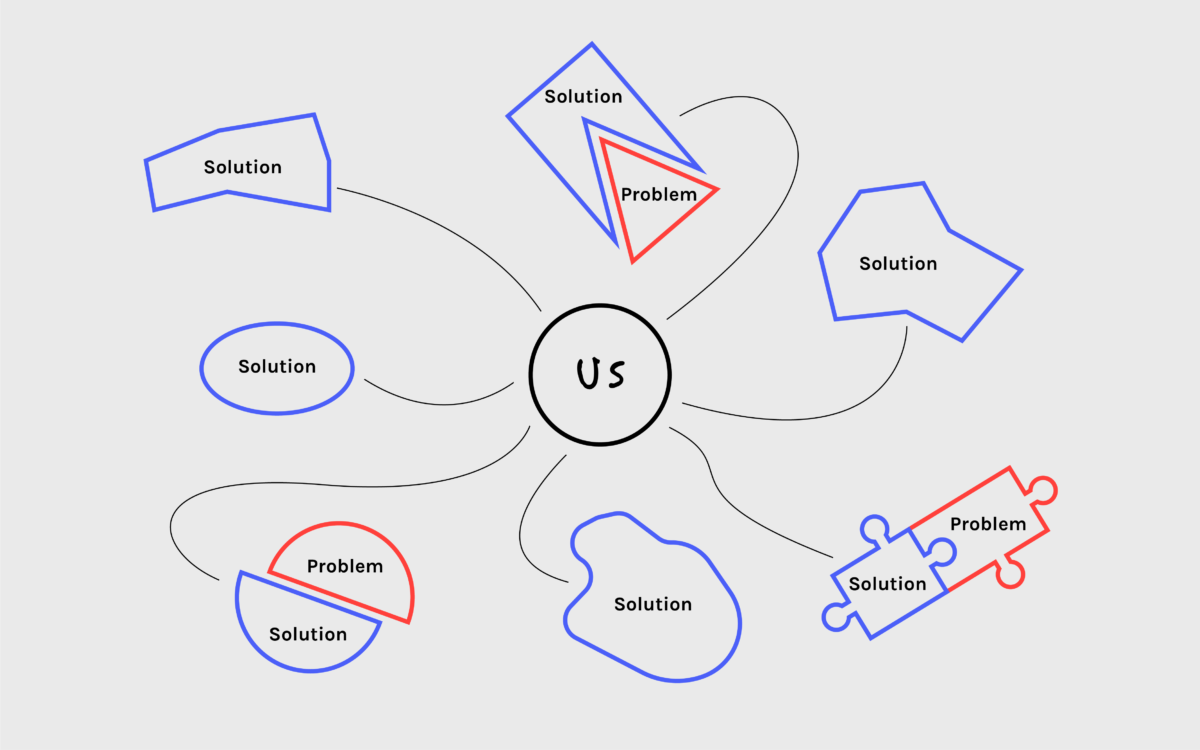
This is a story about precision. It’s about being able to deconstruct ‘meta’ solutions, so you can solve customers’ problems in exactly the right ways on a micro-level. It’s perfect if you’re, say, a multi-cloud platform reseller who can provide (or combine) piecemeal solutions based on specific goals or requirements, rather than locking your customers into one vendor who may only have one solution that’s a perfect fit.
The logic goes:
- Some businesses choose solution A
- Others choose solution B
- But solution A is actually an aggregate of [a1], [a2], [a3], [a4] and [a5]
- And solution B is actually an aggregate of [b1], [b2], [b3], [b4] and [b5]
- But what if the best way to solve your problems is with [a1], [a3], [b2] and [b5]?
- Meet C – the only way to get the precision you need to reach your specific goals (or solve specific, niggly problems)
The pitfalls:
The worst examples I’ve seen of this story are when brands don’t sell customers on exactly how they mix and match solutions well. It’s critical that they explain why their methods (or people) are uniquely placed to do so, otherwise the whole argument falls flat.
Another pitfall I’ve noticed is that when brands have extremely broad, exhaustive offerings, they can end up sounding like a burden on their customers – like their customers will have to navigate through all the ‘micro’ solutions themselves, or that the different solutions they end up with won’t be compatible with one another. It’s why simplicity is a critical element to center this kind of story around.
Support is also a key element in a story like this if it’s being told by a reseller – as an audience may worry that by not going directly to the original vendor, they’ll miss out on certain services, or be at greater risk.
An example:
Cloudreach: Offset the impact of uncertainty
“We translate infinite opportunity into precise choreography—thousands of steps that make your business better while also building towards huge cloud advantage.”
Why it works:
Cloudreach immediately relieve the potential customer anxiety of having to find micro-solutions themselves with the words “precise choreography”. This puts the burden back on Cloudreach, while the rest of the story nicely executes the ‘ultimate toolbox of solutions for each customer’ message, always centering around the theme of precision.
Right. *slaps knees*
So these are eight of the most common B2B story arcs that I’ve seen in the last few years. Hope you’ve enjoyed exploring them. But I’m sure there are way more out there – so if you know of any I’ve missed, or even better: if you’ve created a story arc that isn’t in this list, do please share it below.
P.s – All the images in today’s post were created by Senior Designer Ollie Rone-Clarke. Check him out. He’s dope.

Enjoyed this article?
Take part in the discussion


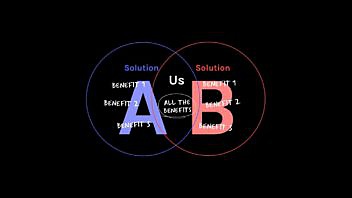





Comments
Gillian Donald Hixsons June 16th, 2020
Absolutely love this. Its clear, simple, insightful and a helpful filter to tweak our own material and plan future content. Thank you.
Emma Langley June 19th, 2020
Thanks Gillian, so glad to hear it! Hope it does help you with that future stuff, and do give me a shout if you end up producing material that doesn’t match the eight arcs in this list! Certain there are more out there.
James Hogan June 16th, 2020
Great article, thanks. I feel compelled to go and audit all my work to see which ones I have – and haven’t – used recently.
Emma Langley June 19th, 2020
Thanks James! Ha, I’ve done the same thing and it’s been a very interesting exercise – stories that seemed completely different (at least to me) turned out to follow very similar structures! Interested to hear the results of your own audit.
Cesar Jose Couto Ferreira Fábrica do Futuro June 19th, 2020
Loud and clear! Truly honest and insightful.
Hunter Pechin Hunter Pechin, LLC July 14th, 2020
It’s always amazing to me how creativity can be categorized, but it makes sense. And once you categorize it, it can be really helpful in being creative. Thanks for doing this.
Emma Langley July 23rd, 2020
It’s funny isn’t it. We don’t want to think this stuff’s formulaic (as that takes some of the magic away) but I agree, once all the fundamentals are laid out it’s actually easier to make the most of them! Thanks for your comment Hunter.
Dalia Kamel Link Development July 20th, 2020
Emma, just love it! Insightful & educative!
Want more of this! It will really help me while revising my old work and creating new projects.
Emma Langley July 23rd, 2020
Thanks Dalia. Glad these will come in useful for your future stuff, and if you end up developing your own story arc give me a shout, we’ll get it on the list!
Elena September 23rd, 2020
The one article you need to master business storytelling! My favorite story arcs are no.7 and 8. The awesome images make this piece of content stand out.
TROY LEE December 17th, 2020
Hi, i’ve been wanting to subscribe after reading the C-word article. but my mac is blocking something. After reading this, i decided I should do smth.
Can you put me in your mailing list?
You have my email.